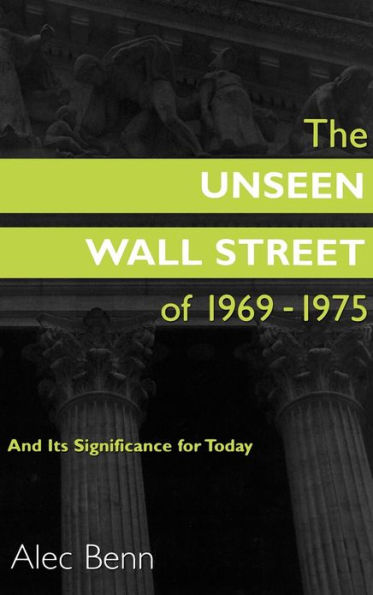5
1
9781567203332


The Unseen Wall Street of 1969-1975: And Its Significance for Today / Edition 1 available in Hardcover

The Unseen Wall Street of 1969-1975: And Its Significance for Today / Edition 1
- ISBN-10:
- 1567203337
- ISBN-13:
- 9781567203332
- Pub. Date:
- 06/30/2000
- Publisher:
- Bloomsbury Academic
- ISBN-10:
- 1567203337
- ISBN-13:
- 9781567203332
- Pub. Date:
- 06/30/2000
- Publisher:
- Bloomsbury Academic
95.0
In Stock

Product Details
| ISBN-13: | 9781567203332 |
|---|---|
| Publisher: | Bloomsbury Academic |
| Publication date: | 06/30/2000 |
| Edition description: | New Edition |
| Pages: | 240 |
| Product dimensions: | 6.14(w) x 9.21(h) x 0.56(d) |
| Lexile: | 1310L (what's this?) |
About the Author
From the B&N Reads Blog



